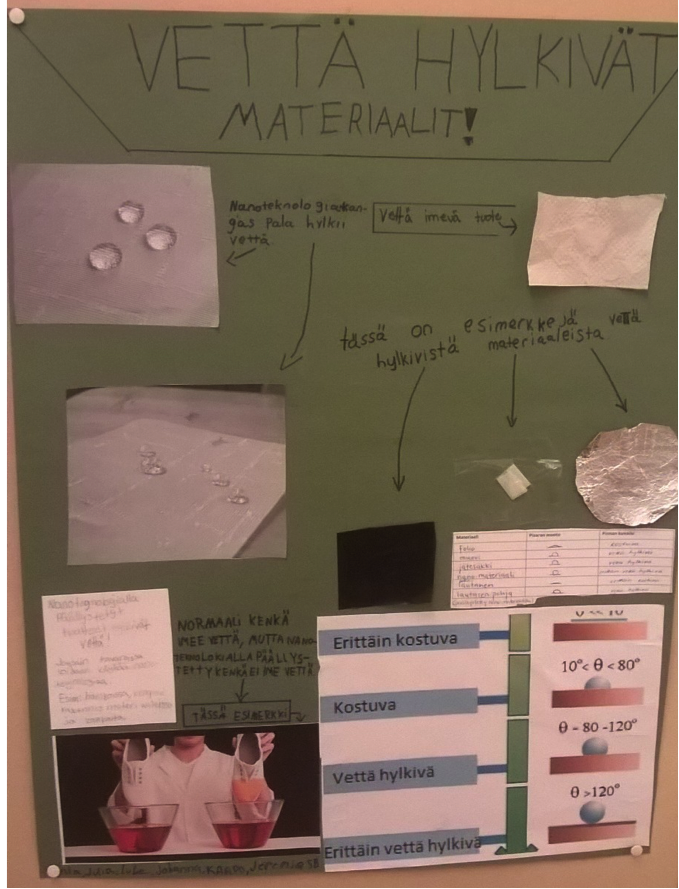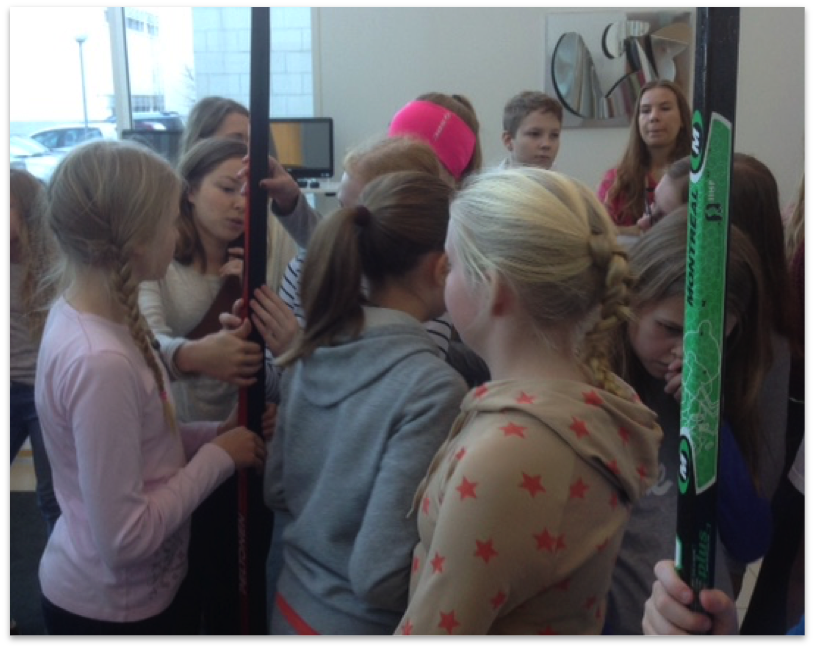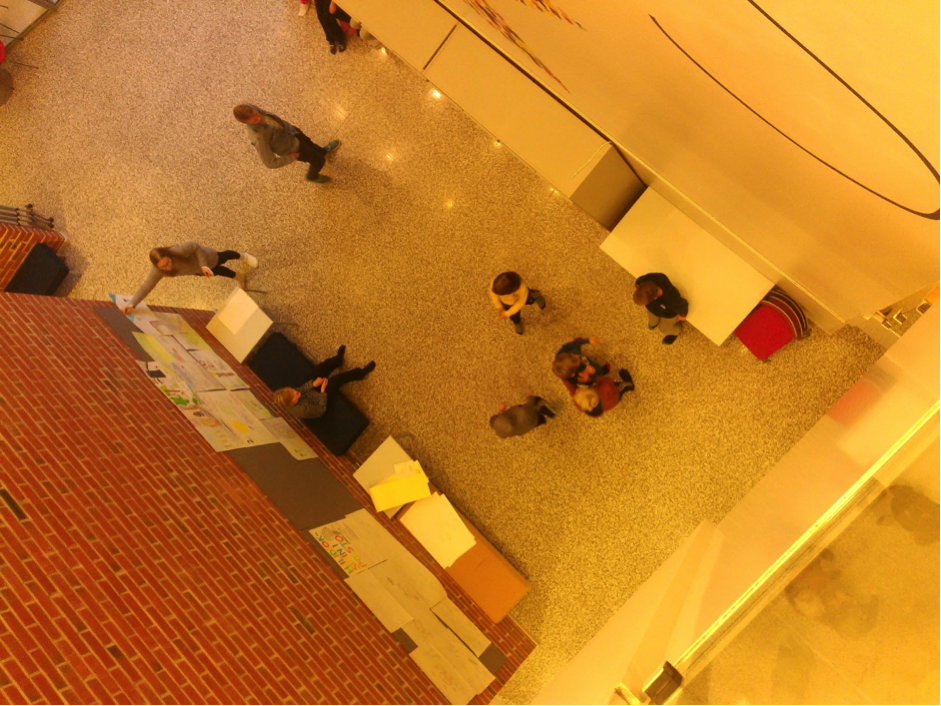During fall of 2015, several elementary and lower secondary schools in Central Finland participated in the project IRRESISTIBLE. With student teachers from the University of Jyväskylä, classes were initiated with Nanoscience, Climate change, and Geoengineering basics. They built different kinds of exhibits to communicate their findings to their peers and sometimes parents or the wider public.
Nanoscience experiences
Three elementary schools in Central Finland, totaling to six classes, tried out the Nanoscience module by University of Crete and the Eugenides Foundation. The 5th and 6th grade classrooms were taught by student teachers. The teachers initially felt they would have a hard time teaching content that they were very unfamiliar with – but were pleased with the end results.
Student teacher: “It’s a good collection of different tasks, and it allows for choice by teacher.”

The teachers sampled the materials provided in the module Teacher and Student guides and chose the most appropriate tasks for the young pupils. Moreover, they added some play and physical activity, such as a role play of cutting down molecule size, where the pupils played the roles of atoms clustered together. The clusters attempted to pass through obstacles and pathways such as between desks, and gave the pupils one concrete idea of how size, rather than material, can have a big effect on properties of matter!
Most classes visited the Nanoscience center (https://www.jyu.fi/science/muut_yksikot/nsc/en) at the University of Jyväskylä. The scientists were very impressed with the children’s thinking, as they toured the facilities and discussed the advantages of fine-tuning materials at the nanoscale. Having studied some of the Big Ideas of nanoscience helped the children during their visit.

Figure 2. Pupils from Normaalikoulu teacher training school (https://www.norssi.jyu.fi/info-1/info) examined the nanocarbon composite Hybtonite (https://en.wikipedia.org/wiki/Hybtonite) skis and hockey sticks.
Engineering the environment
The Geoengineering module, originating from University of Lisbon, was taken up by 5 elementary schools in Central Finland. The 5th and 6th grade classrooms were taught by student teachers. The emphasis of society and the role of science in helping or harming societies were embraced by the teachers. Initially they felt it would be challenging to discuss these ideas with young students, but were also motivated by showing a progression from a science idea to its uses and effects in the society.

Figure 3. Pupils measuring the temperatures of huts built from milk cartons. They studied the effects of different colored roofs on houses by building roofs from colored cardboard and heating them with a lightbulb “sun”.
The learning progression was supplemented by an experimental study on one of the climate geoengineering methods – Solar Radiation Management by changing the reflectivity of Earth. In this case the scale was slightly smaller, and the pupils explored the temperature changes in huts with the aid of infrared thermometers. The addition of the experiment provided balance with the exercises on information search or ethical considerations.
The exhibits hosted both results of the experiments and suggestions for designing houses with roofs of a certain color – can you guess which? – as well as the different geoengineering techniques within both Solar Radiation Management and Carbon Dioxide Removal methods that they had learnt about in a self-directed manner. The student teachers finished the module thinking that more concrete, hands-on tasks would help the elementary school pupils get more out of the module. With many tasks requiring abstract thinking, they felt it was very appropriate at high school level.

Figure 4. The Geoengineering exhibit construction in the large school hallway. The pupils devised statements of how they envision a functioning relationship between science and society. They wrote, e.g., “Science must be taught at schools”, and “The Parliament must keep people up to date”.








